Only 10 days left until the 1024 Intelligent Day of XPeng this year, but discussions about it during office tea breaks have increased significantly.
Despite my expectations, it is quite reasonable that there is already such a long lead time for discussions about the upcoming event, amidst such a high-density schedule of press conferences and activities.
In its third year of hosting the 1024 Intelligent Day, XPeng Automobile will share its thoughts on future intelligence and release some of its research and development results towards becoming more intelligent, which is highly anticipated not only by consumers but also by many vehicle manufacturers’ R&D personnel, as XPeng is the vanguard of the industry.
Yesterday, XPeng released the first 1024 teaser poster on Weibo. Besides the City Road NGP that everyone already predicted, there appears to be something new for this year’s event, which our editorial department is most concerned about.
What other surprises does 1024 have in store for us this year?
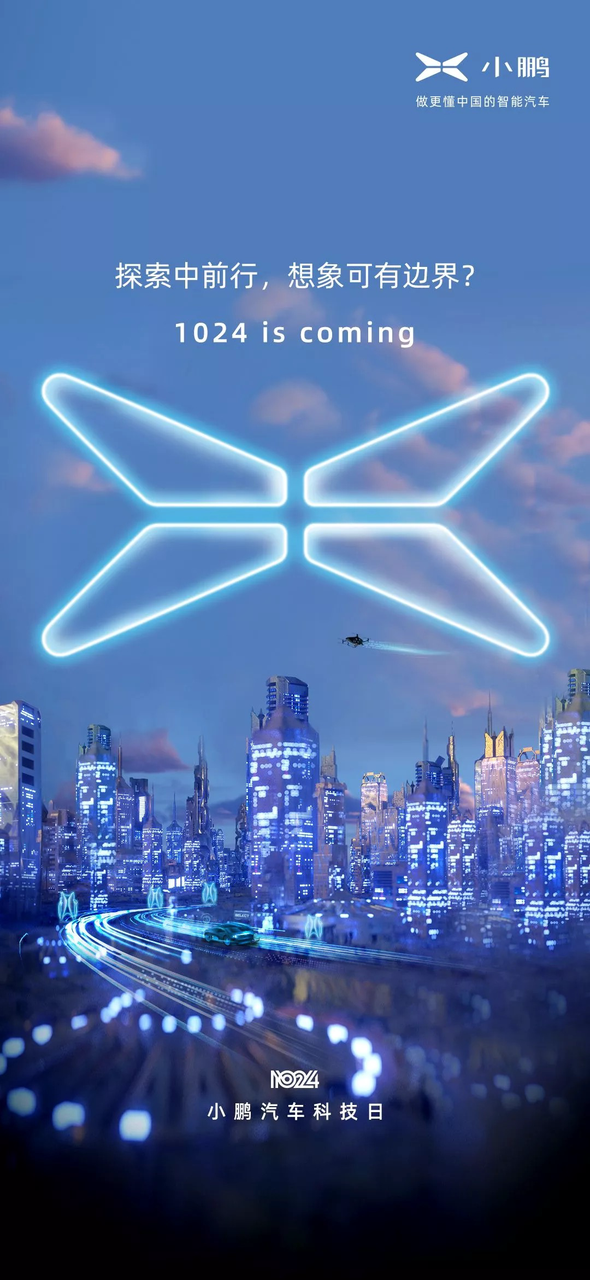
Firstly, there is a seemingly insignificant but very important alteration.
Last year, XPeng defined 1024 as the “Intelligent Day,” but this year’s poster has quietly changed to “Tech Day.” Obviously, intelligence needs a carrier, while the imagination space of technology is greater, hence we can find more things beyond vehicles on the poster.
City NGP requires both hardware and software capabilities
From the poster, it is not difficult to see that buildings occupy more than half of the space, with vehicles shuttling back and forth in-between. This confirms that the release of XPILOT 3.5 City NGP on the 1024 Intelligent Day is a done deal.
From the development trend of assisted driving, urban road navigation assistance has become a very clear development direction. Domestic new forces have abandoned the L1, L2, and L3 definitions defined by SAE, and are working hard to provide users with a wider range of usage.
Although the trend is clear, XPeng Automobile’s extra advantage is “time”.
Since the launch of G3 in 2018, XPeng started betting on the autonomous driving track and firmly believed that assisted driving needs to be “self-developed.” The early strategic decision of technological foresight has also allowed XPeng to enjoy the dividends brought by more time.
In fact, a month ago during the P5 test drive event, we could already see the hardware that supports City NGP. Compared with the hardware parameters of XP 3.0, the P5, equipped with XP 3.5, only has two more DJI Livox Lidars.The function of LiDAR is to create a three-dimensional depiction of the surrounding environment through a laser point array. Compared with millimeter-wave radar detection, LiDAR can more finely and effectively identify small targeted objects such as ice cream cones. Compared with cameras, LiDAR has a lower requirement for lighting and can effectively detect objects even in poorly lit environments.
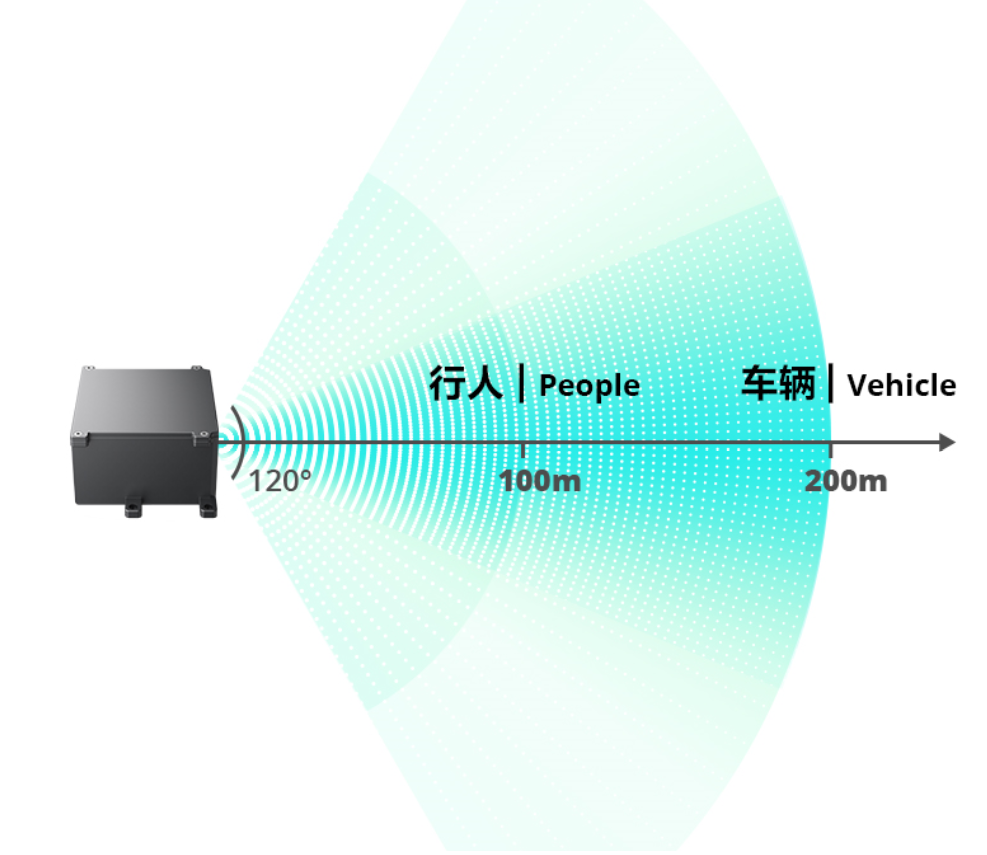
These two rotating prism solid-state LiDARs have a wavelength of 905mm and a detection range of 150 meters at 10% reflectivity, as well as a horizontal viewing angle of approximately 120 degrees and a vertical angle of approximately 80 degrees, which corresponds to the point-cloud density of an equivalent 144-line LiDAR. Based on the parameters, these two LiDARs are not particularly eye-catching.
However, from the perspective of XPeng’s self-developed auxiliary driving logic, it can be seen that XPeng’s main sensor is still the camera, and the LiDAR’s function is mainly for safety redundancy rather than as the main sensor.
Of course, looking solely at hardware data is meaningless. Ultimately, practical experience is what matters most. In September of this year, XPeng also released a video showing the demonstration of its urban NGP system. The content of the video was not particularly stunning, but it is also possible that our threshold for being impressed has been raised.
In terms of functionality, it can effectively recognize unprotected left and right turns, two-wheeled vehicles occupying the lane, sudden lane changes by other vehicles, and so on. The addition of high-precision maps of the city also makes the vehicle appear particularly intelligent on roads with complex lane markings.
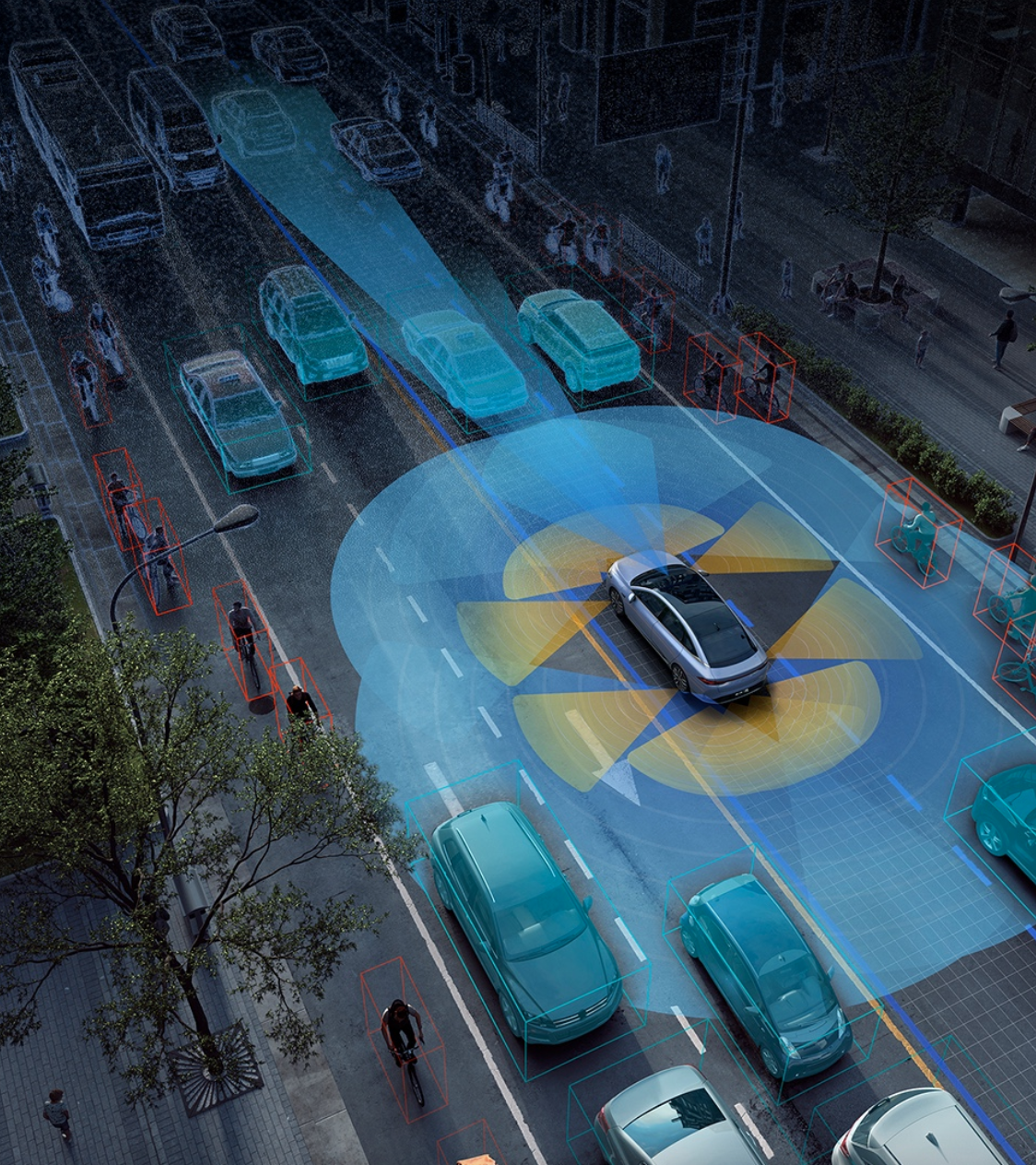
Based on the currently available information, the hardware data of XP 3.5, aside from the two LiDARs, has not changed, and the chip is still the 30 TOPS NVIDIA Xavier.
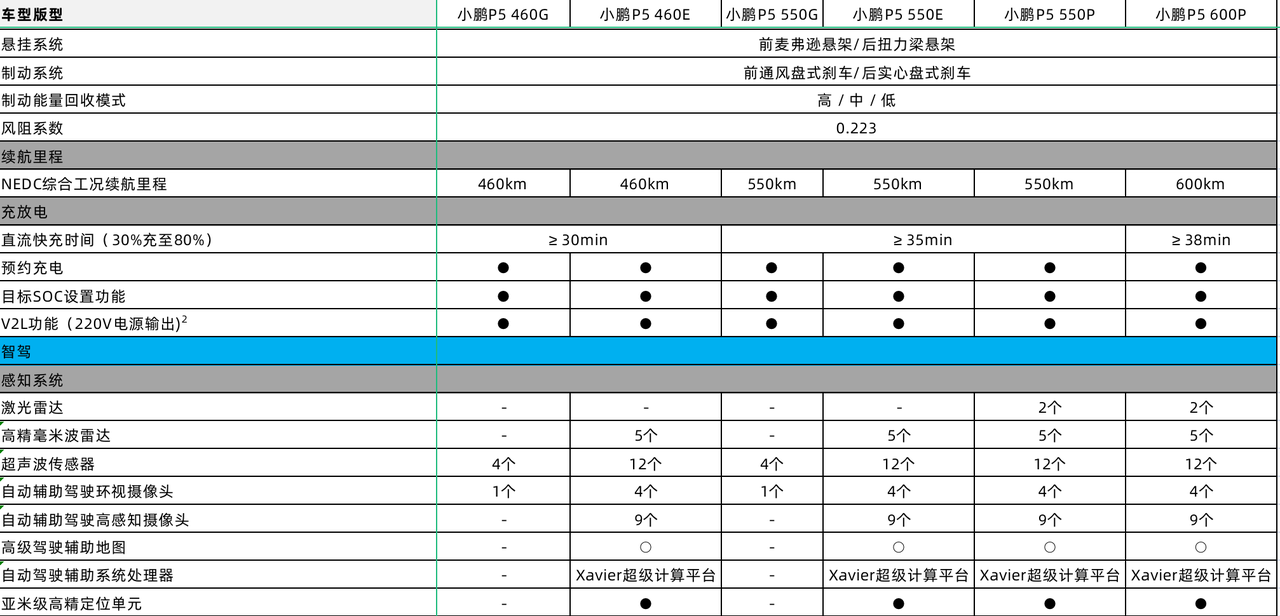
So, in terms of hardware, P5 does not have many impressive features compared to the models planned to be released next year. However, the excellent experience of the current high-speed NGP system tells me that XPeng is the car company that currently understands the Chinese road environment the best, which makes me have higher expectations for the urban NGP system.
And behind the lack of impressive features is lower costs. Selling the same functionality at a lower price is also a way to compete.
More Energy, More Energy, or More Energy
On the poster, small, self-built supercharging stations are spread across both sides of the road.
This year, XPeng Automotive has installed a large number of self-built supercharging stations in urban, high-speed, and remote areas, and expanding the coverage is an inevitable trend. However, from a technology perspective, if the company only announces a policy of expansion, obviously it will be difficult to satisfy the audience’s appetite and will not be in line with the theme of “technology”.# From XPeng Motors’ prospectus for its Hong Kong IPO, it can be seen that the next model is a mid-to-large-sized SUV built on the P7 platform. The current battery capacity of P7 has reached 80.9 kWh. Considering the higher energy consumption and larger size of the SUV, the battery capacity is bound to reach a new height.
However, XPeng’s current generation of supercharging has been released for more than three years, and it is difficult to say how much technological advantage the 90 kW supercharging has. New entrants such as Voyah, Li Auto, and Xpeng have released faster charging speeds or prepared updated charging technologies.
Here, I would like to make a bold guess that to meet the next model of XPeng, supercharging will also be further iterated at this year’s Technology Day. You can also share with us in the comments section, what kind of charging and energy replenishment experience do you hope to have.
Technology may go beyond cars
The other half of the poster is the sky. In the vast sky, the black aircraft is exceptionally dazzling.
If nothing unexpected happens, this is the HeTianLv Traveler X2 that XPeng exhibited at the Zhuhai Air Show before. This is the third flying product launched by XPeng, following the T1 and X1 aircraft.
Starting from the Guangzhou Auto Show in 2020, XPeng began to bring these aircraft to the exhibition stand. Looking at it from now, more than half of people would consider it too imaginative. Although on rainy Monday mornings stuck in traffic, I have thought more than once that it would be great if my car could fly, but I also think that this idea of mine has no possibility of realization.
Now it is too early to deny this innovation, because every great demand has two characteristics: one is that people will say it is a great demand but cannot be realized; the other is that people will say they do not have this demand.
Looking back
To be honest, every time XPeng releases new and interesting things, I am amazed, but I cannot help but wonder “will this thing be useful?”
Unfortunately, I am not a prophet, and I cannot know whether XPeng can bring seemingly advanced functions into people’s lives.
However, I can see from last year’s 1024 event to now to see how much surprises XPeng has realized for us.
93.2% of daily voice usage was the answer given before October 24, 2020. But after 1024, voice usage rate is no longer a function data for XPeng, but rather an interactive data.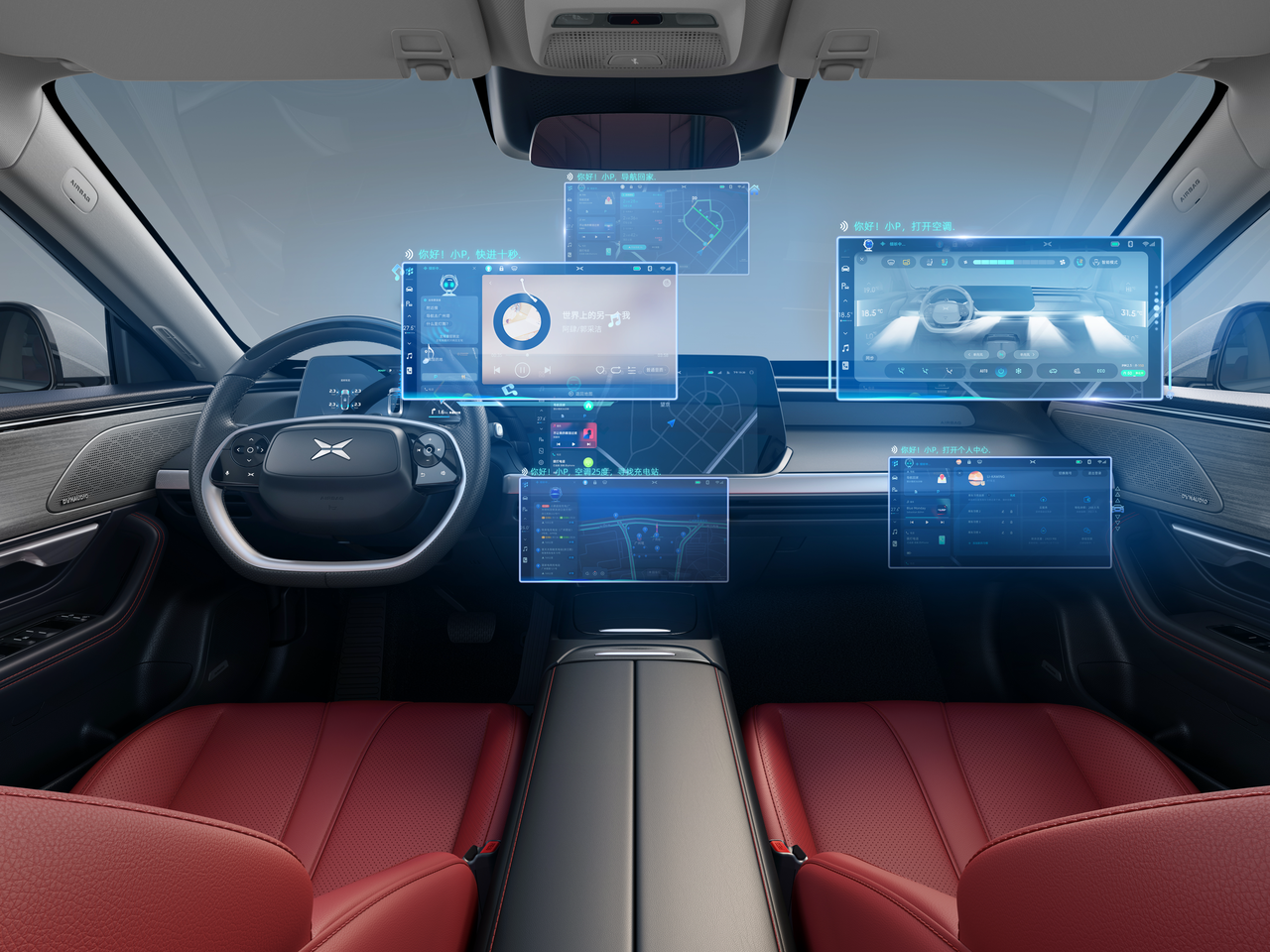
The release of the V 2.1.0 full-scenario voice interaction has put XPeng Motors ahead of the game in the intelligent cockpit sector. The voice control, a universally recognized “operating tool”, has been elevated to the level of “interactive logic” on par with touch and press.
I was amazed by the precision of voice control, such as opening a car window by just 1%; the ability to filter voice information points, checking the function usage notice by saying “I have read it”; and the ability to understand contextual contents through continuous voice usage.
It’s not about how common or miraculous these operations are, but rather the fact that this logic truly overturns the past idea that voice can only functionally serve certain scenarios, but instead seamlessly integrates voice into the control center. This allows drivers to use their mouth to replace the touch interaction that is difficult to use while driving.
Now, both Li Auto and NIO, the other two major new forces, have started to roll out their own full-scenario voice control in September this year, after XPeng Motors. Even though Li Auto’s “Li Xiang” APP updated to version 2.2 has features that keep up with XPeng Motors quite closely, and NIO’s “NOMI” also updated to Aspen 3.0, their continuous voice experience is not as comfortable as XPeng’s, and there is still a sense of estrangement when talking to a machine.
We can see that after XPeng Motors launched the full-scenario voice interaction, Li Auto and NIO also successively launched this function. Not many of them kept up with the trend, or underestimated the trend, and only followed when they saw others do it.
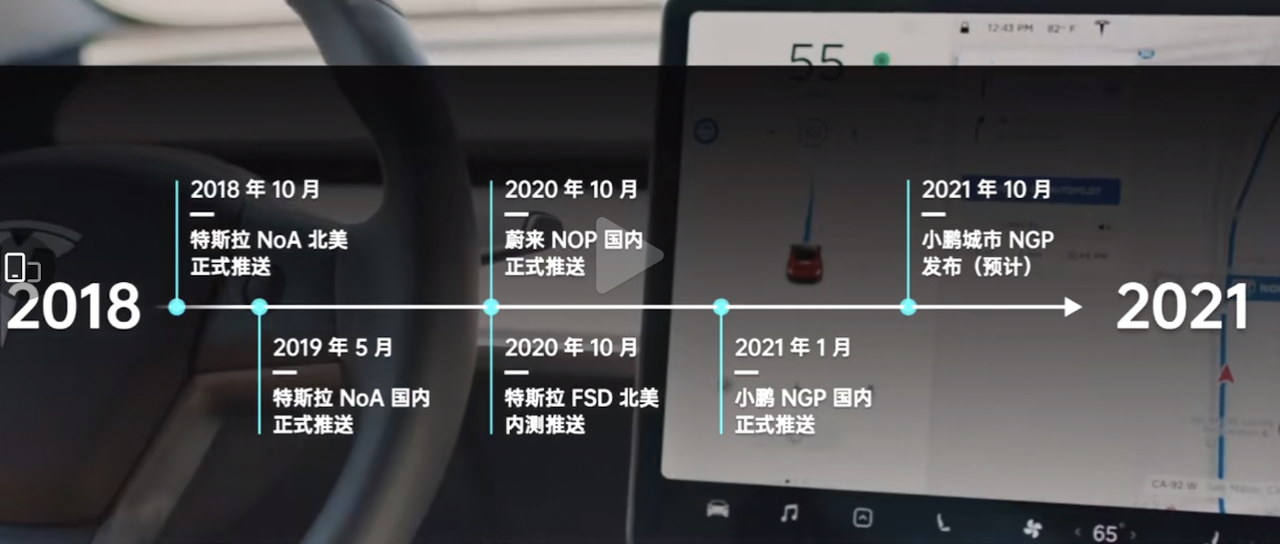
Although the high-speed navigation assistance launched by XPeng only last year is not the earliest one in China, with Tesla’s NOA and NIO’s NOP launching earlier than XPeng, XPeng’s advantage in time is constantly growing, as shown in the test data from 42Mark. The actual experience of XPeng P7, especially compared to the Li Auto ES6, which also uses high-precision map navigation, has scored much higher. In actual use, the P7 with high-precision maps performs much better than Tesla, which relies solely on sensor algorithms, and can judge and make decisions earlier in complex entrances and exits of interchanges.
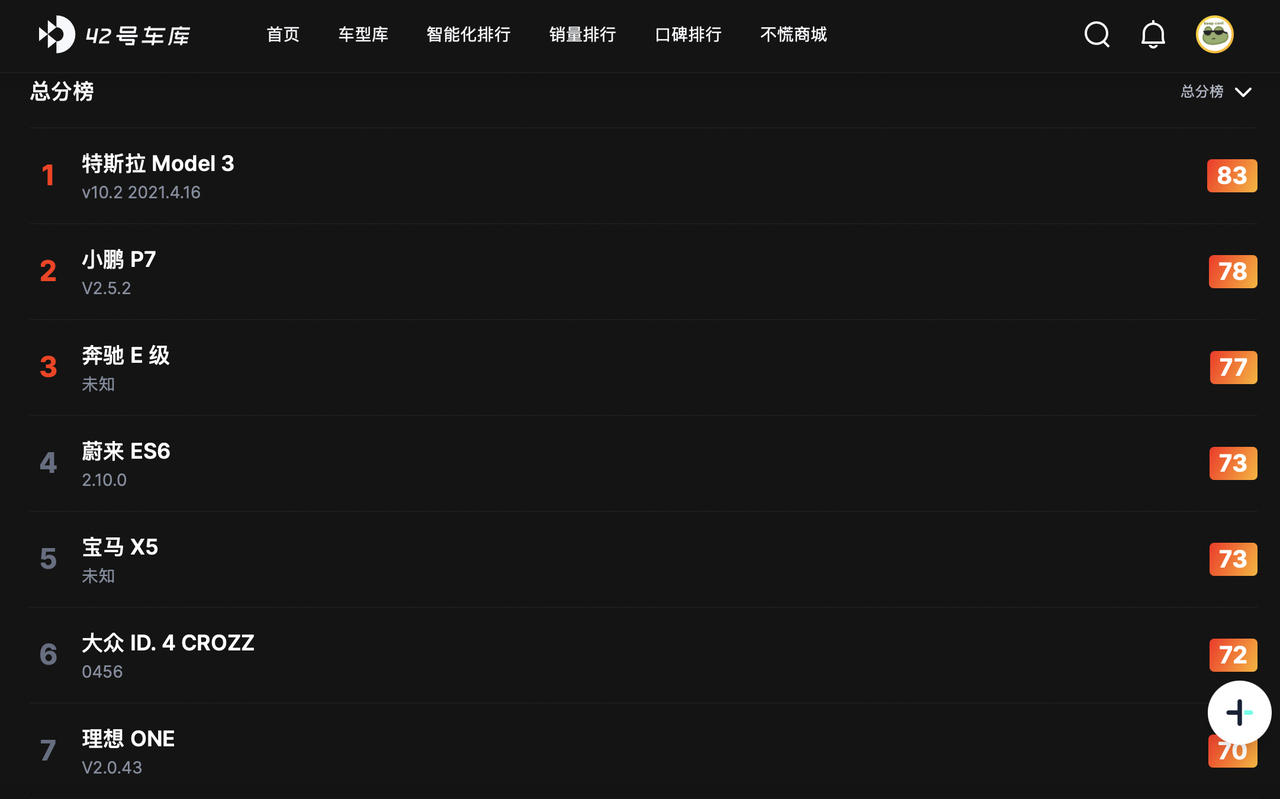
Looking back, it can be found that XPeng Motors’ accurate judgment of technological trends was evident in the Full-scenario voice interaction and NGP launched last year. They not only achieved absolute leadership in terms of time, but also had a profound understanding of technological trends.## Should we be optimistic or pessimistic?
To be honest, writing up to this point, I suddenly thought of a mobile phone brand that I used to love very much – “Smartisan Technology”. In 17 years, Luo Yonghao released mobile phone features such as “Big Bang”, “One Step”, etc., which can now be seen slowly on modern phones. Even the TNT (Touch And Talk) function that he strongly promoted in the Bird’s Nest in Beijing is now being implemented in car multimedia systems.
Luo Yonghao is actually quite forward-looking, as is XPeng. To become a leader in an industry, it naturally requires sufficient imagination and technical capabilities. More importantly, one must bear a certain amount of trial and error costs.
XPeng suffered losses on the G3’s roof camera, which, although cool in function and able to see the surroundings of the vehicle from all angles, quietly exited the stage of history due to its unique design and non-existent user needs. The touch buttons on the steering wheel of the P7, adopted to be more technological, have also caused inconvenience in use.
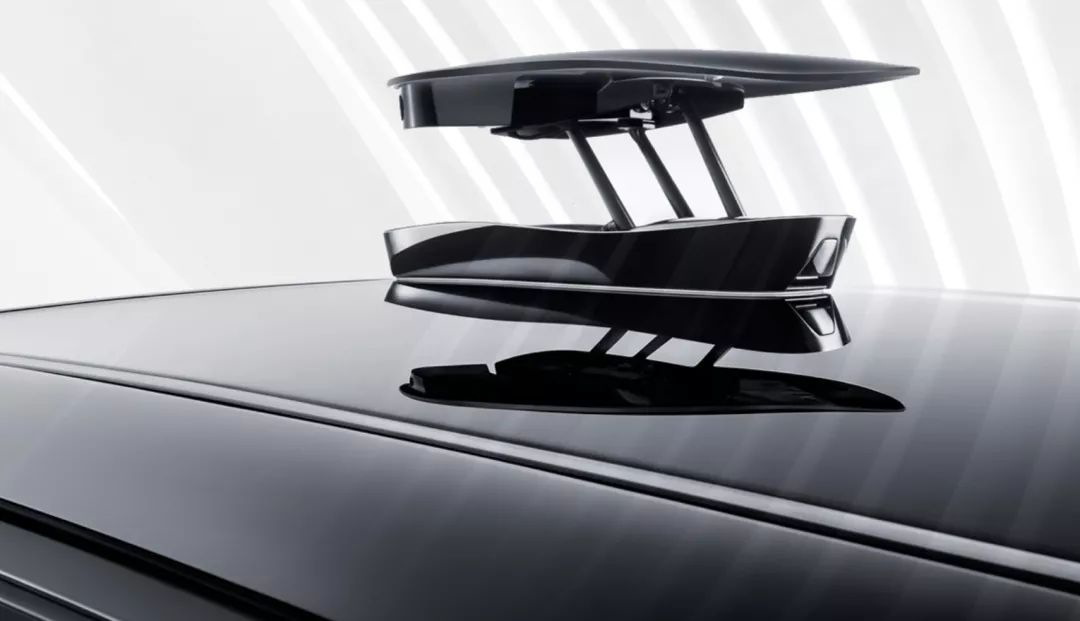
However, everything has two sides, and radical ideas and creative designs need to bear corresponding risks.
Of course, we should not “spit out the food we’ve eaten”. XPeng’s various creative ideas for future mobility can be seen, and this company is still in a period of rapid development.
As a brand-new brand, XPeng can create all kinds of imaginative possibilities in a completely new environment and do some creative designs and ideas that “stable” companies cannot do. This story is very similar to the warrior challenging the dragon. If there are no attempts by these innovative companies, how can anyone know whether this path will work or not?
Moreover, XPeng is not really driftless. They have a skyward-looking attitude towards the future, but they still remain grounded for the present. Cars are made for people to use. All smart functions are also designed to serve drivers.
But at this stage, XPeng is facing a more realistic problem. NGP and full-scenario voice recognition are being gradually caught up by others. Urban NGP is also a difficult bone to chew. How long can they maintain this gap? The window of time for this gap is an unknown.
The microphone is handed over to XPeng for 1024 Tech Day.
This article is a translation by ChatGPT of a Chinese report from 42HOW. If you have any questions about it, please email bd@42how.com.